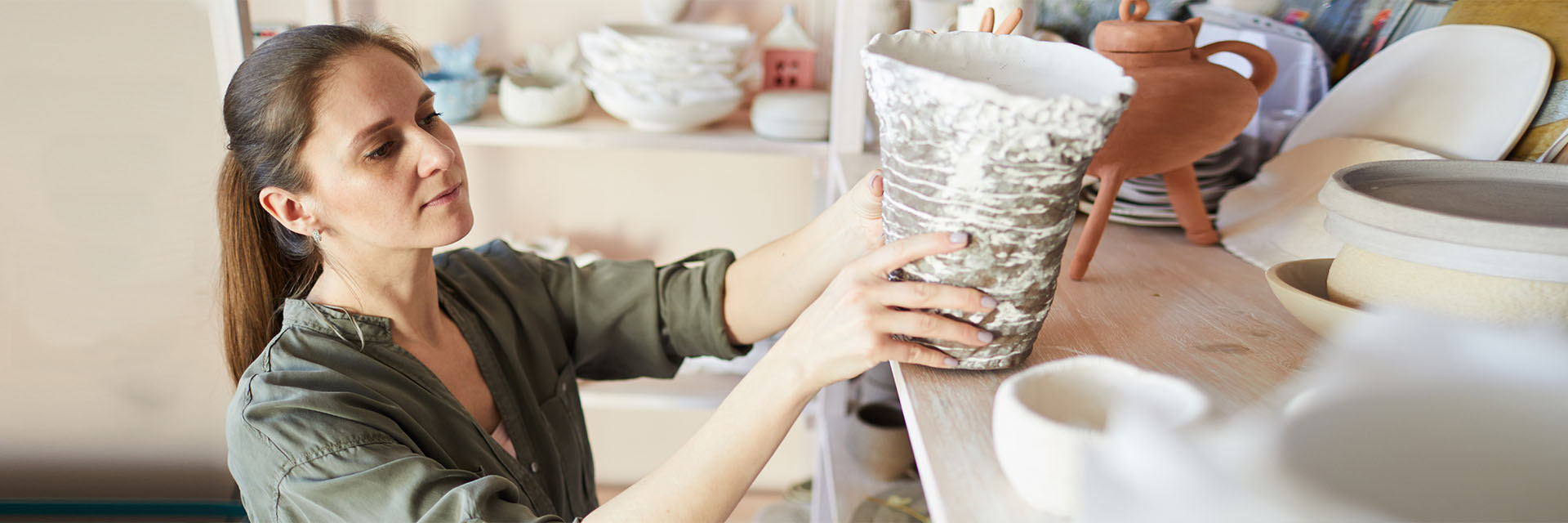Thrift store shopping is having a resurgence in popularity these days with entire social media accounts dedicated to thrift store finds and even how to make money reselling gems you find. However, you may bring home more than you bargained for if you’re not careful. If you’re an avid thrifter, you may already know to be on the lookout for telltale signs of bed bugs or moths, but did you know you should also add lead to that list?
Lead is a toxic substance and exposure to lead can be especially harmful to young children, pregnant women, and individuals with compromised immune systems. While there are restrictions in place now, before 1978, lead was a common component in paint in the United States and therefore can be found in some older consumer products, including certain types of toys, jewelry, and household items. Therefore, these same vintage items can still contain lead paint, and old paint is likely to chip or form lead dust that can be harmful.
However, lead restrictions are not globally as strict as they are in the United States. That means underregulated items can still make their way into thrift stores, and ultimately, your home.
How and What to Test
As we mentioned, there are several items that may contain lead and should be tested before use.
Here are a few examples:
- Children's toys – Children’s toys, especially those made before 1978, may contain lead-based paint. Toys made in other countries may also contain lead.
- Jewelry – Certain types of jewelry, such as costume jewelry, may contain lead. This is especially true for items made in other countries.
- Dishware – Some types of dishware, particularly those made in other countries, may contain lead. This is especially true for pottery, ceramics, and glazes that are not certified as lead-free.
- Furniture – Certain types of antique furniture may contain lead-based paint or other materials that could contain lead.
- Electronics – Some older electronics, such as CRT monitors and televisions, may contain lead.
“Some countries have looser restrictions and less regulation around lead-based products. Even if you never travel abroad, just because of the nature of how global our economy is, items from those countries can still find their way into your home,” explains Chris McGonnell, M.D., a pediatrician and physician on the medical staff at Texas Health Frisco, and at Forest Lane Pediatrics.
Try to look for items that are labeled lead-free or that are known to be made from safe materials. Second, consider purchasing items that are newer or that have been recently tested for lead by the manufacturer or a third-party testing agency.
When it comes to testing, thankfully there are a couple of easy methods, even some you can do at home. While there is no shortage of at-home tests, many kits are not reliable and can offer false positives or false negatives. To be on the safe side, opt for a kit that is approved and certified for use by the Environmental Protection Agency (EPA). For convenience, the EPA has a list of lead test kits recognized by their agency for quality and effectiveness.
There are also companies who can come out to your home or you can send your items to in order to check for lead. These companies may use X-ray fluorescence (XRF) testing, acid testing or more thorough lab testing. While some of these options can be more expensive than at-home testing, if you suspect that an item may contain lead, it is always best to have it tested by a professional to ensure accuracy and safety.
It is important to note that while you initially start testing for lead in thrifted items, they’re not the only items that may contain lead in your home. The EPA recommends also testing your water and plumbing for lead since heavy metals are known to leach into water. You should also consider testing the outside of your home and even the dirt around your yard if you plan to grow food or allow your kids to play in it and have any suspicion that lead may be present.
Why It’s Important to Test for Lead
There is no known “safe” level of lead exposure. Adults can develop neurologic problems, constipation, and high blood pressure after lead exposure. Lead exposure in children is associated with cognitive delay, lower IQs, and brain damage.
Lead is one of the biggest environmental threats to young children, and the only heavy metal that the American Academy of Pediatrics and the Centers for Disease Prevention and Control (CDC) currently recommend parents screen their children for exposure. There are often no apparent symptoms when a child is exposed to lead, which is why many health care providers include the screening in annual 1- and 2-year-old well-child checkups. The test, no matter for a child or adult, is typically done with a small blood sample taken from a simple finger prick.
The Takeaway
While lead is another thing to be mindful of when thrift store shopping, going in with some knowledge of common items and timeframes of when a piece was made can help you make informed choices, then testing can help you be extra sure that your new gem is safe.
If you suspect that you or a loved one has been exposed to lead, even if the results of a home lead test kit are negative, contact your physician or Poison Control (online at poison.org or by phone at 1-800-222-1222) immediately.
While adults with moderate exposure usually recover without any complications, even low lead exposure can cause permanent intellectual disability in children and require a longer recovery.

